After 50 years on TV, has Sesame Street been gentrified?
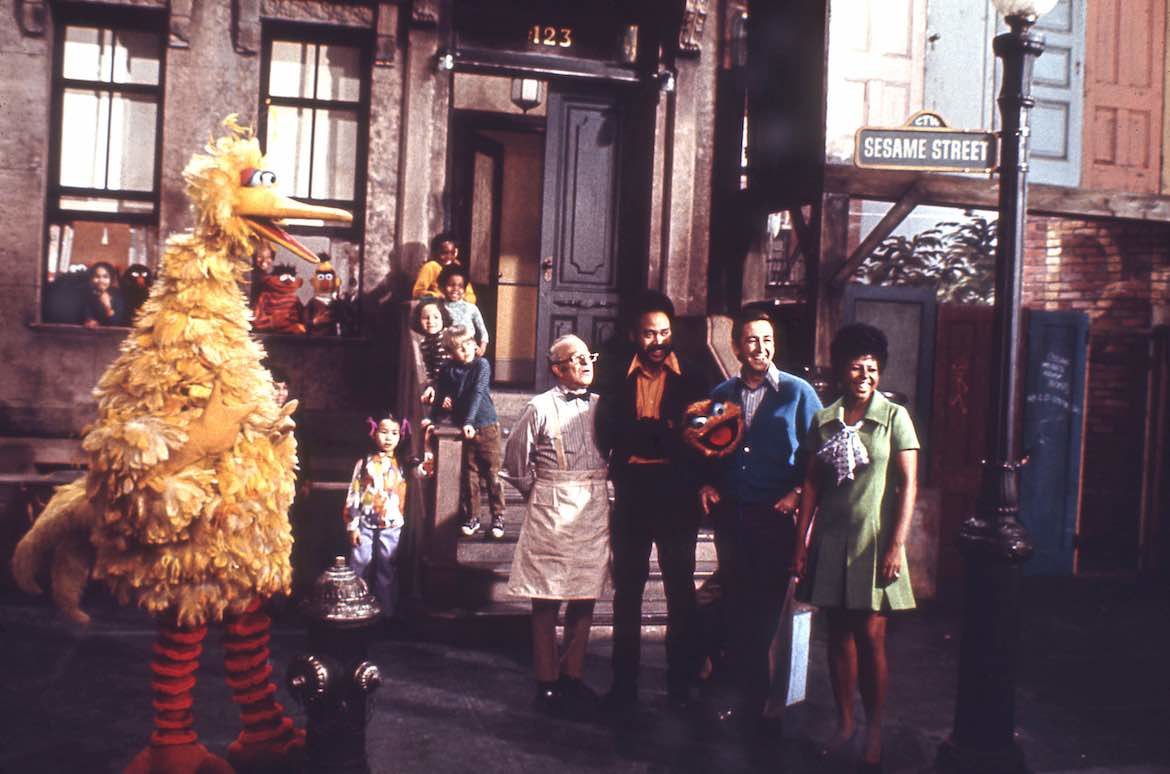
A cast photo from the first season of "Sesame Street." Oscar the Grouch, seen under Bob's arm, was originally orange before being remade as a green puppet for the second season. Bert, Ernie and Big Bird were already major characters. Grover and Cookie Monster were far less developed and less differentiated from other blue monster Muppets.
I’m a stay-at-home dad. It’s the best job I’ve ever had, if possibly the hardest. I love spending time with my daughter, and I love watching her grow up and learn.
Before my daughter was born, I earned a doctorate in history, for which I focused on the history of communications. Since my daughter’s birth, I have continued to teach part-time as an adjunct professor of communications at various schools.
As one might expect of someone who has actually taught “Intro to Television” at a college level, I don’t get too snobby about screen time. I try to limit the number of hours my daughter watches TV, and I understand why the television is not a great babysitter. But I do plop my daughter in front of the TV sometimes. I’ll be honest — it is necessary for my sanity. And part of the reason I feel able to do so without much guilt is Sesame Street.
I grew up on Sesame Street. I taught myself to read by the age of four thanks to a steady diet of Sesame Street, The Electric Company and comic books. While I had close relatives die when I was young, the first death I really remember was when Mr. Hooper died in 1983. I still get choked up when I think about it.
So when my daughter reached the age where Sesame Street was capturing her interest, I had no problem setting her down in front of the TV to watch “the Street.” That said, I had an issue: I really, really hate Elmo.
I can’t stand Elmo’s voice. I can’t stand how his character is written. At three years old, he is half the age of Big Bird, who was originally thought of as a surrogate for the show’s target audience. He’s infantilizing and treacly. I don’t even care for the puppet’s design — the only Sesame Street Muppet with eyes on the top of his head should be Cookie Monster. I did not want my daughter loving Elmo.
Of course, she does love Elmo.
It was unavoidable. It’s Elmo’s world, after all — we’re just living in it.
But if she was going to love Elmo anyway, I was at least going to track down old episodes of Sesame Street — pre-Elmo Sesame Street — to start her out with.
What I discovered was a small community of YouTubers (who exist in a legal gray zone, to be generous) who track down old VHS tapes of Sesame Street, digitize them, and upload and share them. There are occasional takedown notices. That’s the nature of the beast. But generally they seem to be seen as not worth pursuing by the folks who own the rights. Which is great, because it’s a wonderful resource. You can watch the evolution of Sesame Street over 50 years, from 1969 to the present, on YouTube. And frankly I would recommend doing so to anyone. The show really holds up.
So I started watching the show with my daughter. We focused on episodes from before 1988 or so, before the ascension of Elmo. Cumulatively, we have easily watched between 50 and 100 hours of vintage Sesame Street in the last year.
My spouse and I also have HBO Go and Hulu, both of which have episodes of Sesame Street from 2004 to today — shows that aired during my adulthood, in other words. So eventually I gave up and started watching more recent episodes as well.
And what I saw was that my old television neighborhood was gone. My immediate impression was akin to seeing the impact of gentrification transform a neighborhood you once knew. We’ve all experienced this at one time or another. You used to live or work or spend lots of time somewhere, and you come back years later, only to find it transformed to the point where it’s unrecognizable.

Everything seemed cleaner, somehow. Hooper’s store was still there — they have free Wi-Fi now! — but many local fixtures have been replaced with hipper, newer options. There’s a bike shop and a rooftop garden atop the brownstone at 123 Sesame Street. Everything seems to have been repainted in brighter colors. You might see an occasional familiar face, but the folks you knew from way back don’t live there anymore. The demographics have shifted.
I wanted to figure out what had happened to the show — why it was so different. It had to be more complex than the simple passage of time. And because I’m a historian of media and my mind just works this way, I began a seriously deep dive into the history of Sesame Street. Because that’s what you get trained to do, when you get a doctorate. You learn to obsess, to go down rabbit holes, to dedicate months of research to questions that other people would just shrug and forget about.
I’ve acquired a small library of used books about Sesame Street, which occupies a shelf in my living room. Studies by educators, histories, memoirs by cast members — the more I researched the show’s history and evolution, the more episodes I watched and the more I learned what was happening behind the scenes, the more my initial impression was confirmed: Sesame Street has, in fact, been almost literally gentrified. Over the years, the show has responded to economic pressures in much the same way many cities have — by trying to “clean up” the neighborhood, force out minority communities, and thereby raise the metaphorical real estate values.
A brief history of ‘Sesame Street’
Sesame Street may be populated by monsters, but no single “evil developer” character can be blamed for the gentrification of the Street. Rather, it can be understood as a series of rational decisions based on audience response and funding, paired with a loss of the vision and institutional memory that came as the original generation of Sesame Street’s creators gradually passed away or retired.
The initial germ of Sesame Street began to take root and sprout at a dinner party held at the Gramercy Park apartment of National Educational Television producer Joan Ganz Cooney and her husband Tim. Among the guests was psychologist and Carnegie Corporation exec Lloyd Morrisett, who had recently marveled at how his daughter watched test patterns as she waited for Saturday-morning children’s programs to air and memorized a whole host of jingles and slogans from ads.
Morrisett, whose work centered on children and education, asked Cooney whether she thought that television could be used to educate America’s youth. Cooney replied that she didn’t know but thought it warranted further investigation. She led a feasibility study, which led to a series of pilots — effectively iterative prototyping followed by outcome testing, which in turn shaped the show’s format and style.
Empirical testing of educational outcomes has always been a cornerstone of the Children’s Television Workshop, even after the organization was renamed Sesame Workshop in 2000 as non-broadcast media became more important to its strategy. The Workshop has always shaped the show around a seasonal curriculum and has always routinely tested the efficacy of the program in meeting learning outcomes. This is one of the truly revolutionary things that Sesame Street did that made it something new and special.
But just as much as it has always been about learning the alphabet, numbers up to 20 and lessons about sharing, Sesame Street has always been a show about inclusion and representation. A commitment to these principles was baked into the show from the beginning. The program was initially funded with grants from the Carnegie Corporation, the U.S. Department of Education and the Ford Foundation. It was the Ford Foundation that insisted the program target in particular inner-city poor and minority children.
Jon Stone, who essentially served as Sesame Street’s showrunner over its first twenty-some years, had the idea to imbue the set with a sense of inner-city verisimilitude. If the program was to target inner-city youths, Stone reckoned the best way to do so was to present those children with a location that looked like a realistic facsimile of where they lived. To that end, Stone demanded a “movie quality” main set — one with a much higher degree of detail than most television programs would have for their sets in the late 1960s. Trash cans and light poles, to that end, were scuffed up and grime-covered. Dirt and signs of age and wear were everywhere. The street set looked lived-in and real, in a way that children’s television at the time simply didn’t — and still doesn’t today, despite the ubiquity of high resolution.
Two primary commitments informed CTW’s mission when it began. One was a commitment to empirical research, to always testing and making sure the show is effectively teaching its curriculum. But another element was just as important: a commitment to a specific vision of television as a teacher and specifically (though never exclusively) a way of bridging educational gaps in early childhood that lie along class and race lines.
From the first episode, the African-American characters of Gordon and Susan Robinson were the emotional center of the show, serving as surrogate parents.They owned the brownstone at 123 Sesame Street and served as hosts and educators to children in their home or on the street.
Over the next few seasons, the cast expanded rapidly, and the neighborhood took on a diverse Latinx community as well as more black characters. Season Three introduced multiple Latinx characters, including Sonia Monzano’s Maria, Emilio Delgado’s Luis and Raúl Juliá’s Rafael. Later in the ’70s, the show would diversify in multiple interesting ways, including the additions of Native American folk singer Buffy Sainte-Marie, the deaf actress Linda Bove and the child actor Jason Kingsley, a person with Down syndrome.
There was even some diversity among the Muppets. Created and voiced by the original Gordon, Matt Robinson, the Muppet character Roosevelt Franklin was a little boy who would sometimes take over his elementary school classroom. Roosevelt Franklin’s lessons were a place where Robinson, who wrote for the show in addition to acting, was able to insert some of his most overt messages about Black Power and black pride. One particularly strong example was a sketch in which Roosevelt teaches a geography lesson about Africa being far richer and more complex than it is portrayed as in popular media.

Roosevelt Franklin’s classroom was chaotic and antiestablishment, as overcrowded urban public schools often are, and the Muppet students in these sketches spoke inflected by African American Vernacular English. Robinson’s ex-wife, Dolores Robinson, would later say that “Matt’s pride in his race and his anger with racism all came out in Roosevelt.” Similarly, Robinson’s daughter, actress Holly Robinson Peete, would say “Roosevelt basically was the essence of my father. Everything about him — the songs, the voice, the way he moved — that was my dad.”
While Robinson may have meant the Muppet and the sketches he starred in to be a celebration of blackness and locus of black pride, the chaotic classroom and overtly black-inflected language actually led to the segment’s downfall. Roosevelt Franklin was ultimately abandoned when he proved to be too much of a lightning rod for controversy and respectability politics. Some black CTW executives, notably Lutrelle Horne and Evelyn Davis, objected to the character because they felt he perpetuated racist stereotypes. Others faulted Roosevelt Franklin for not being black enough. One such critic was Barbara H. Stewart, who in 1973 published an article called “‘Sesame Street’: A Linguistic Detour for Black-Language Speakers,” which critiqued the dialog in a Roosevelt Franklin sketch as not strictly adhering to the rules of African American Vernacular English, dismissing it as “stage Negro dialect.” Ultimately, CTW decided to play it safe and eliminate the controversial character.
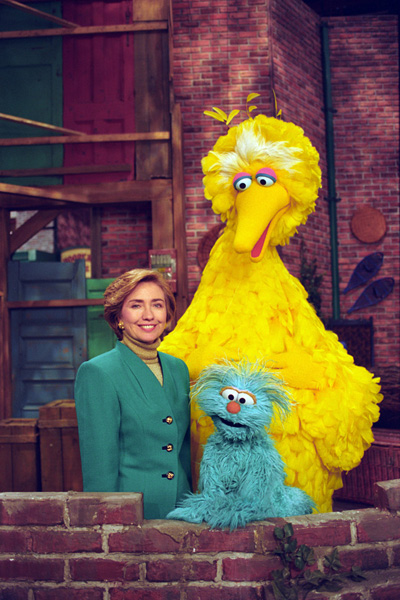
Over the years, economic pressures came to bear on the show. The grant funding that seeded the show eventually dried up, but merchandising was able to serve as a stopgap. The show’s dependence on merchandising deepened even further into the early 1980s as government funding shrank. But this was not a problem, as the show was — from its first season — phenomenally popular. Dolls, books, records and later videotapes all provided a lucrative source of income to supplement what dwindling funding could not.
In 1992, a big purple dinosaur named Barney started eating into Sesame Street’s ratings and ancillary merchandise dollars. It was the first major challenge, the first commercial threat to Sesame Street’s reign. And it was in this environment that Kevin Clash’s Elmo became a breakout character. Elmo had been growing in popularity, and with the marketing challenge that Barney represented, the Workshop doubled down on the red Muppet. Data showed that younger kids in particular loved Elmo — he was especially popular with children as young as 1 or 2, whereas the show was originally targeted at 3- to 5-year-olds. Perhaps not coincidentally, Barney similarly attracted children on the younger end of the 5-and-under set.
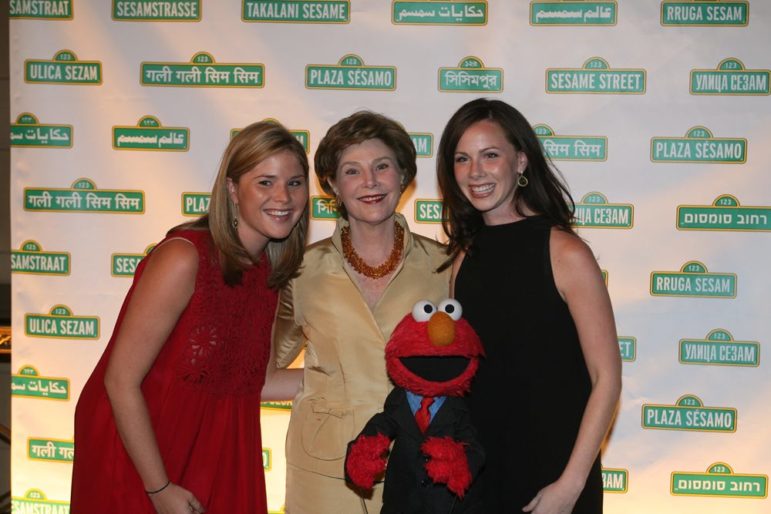
The show got a major reprieve in the form of the Tickle Me Elmo Doll, which was propelled to success by the endorsement of talk show host Rosie O’Donnell. That’s when the show’s producers went full throttle into Elmomania. By the end of the decade, the last 15 minutes of each episode were dedicated to “Elmo’s World,” a segment in which Elmo is often the only character from the world of the rest of the show. The segment takes place in front of a green screen, and the computer-animated hand-drawn crayon environment of the segment literally represents Elmo as the creator of the world he inhabits. Elmo is like unto a god here, interacting primarily with his goldfish, his computer and television, and Mr. Noodle, a clown who demonstrates ridiculous misunderstandings of basic questions like “How do you play with a friend?” posed by Elmo, who then corrects Mr. Noodle accompanied by a chorus of disembodied children’s voices.
In the same decade, many of the show’s original creators passed away or retired. Joe Raposo, who composed so many of Sesame Street’s most classic songs, died in 1989. Jim Henson died in 1990. Joan Ganz Cooney stepped down as head of CTW the same year. Muppeteer Richard Hunt, who played many secondary characters including Forgetful Jones, Don Music and Sully the silent construction worker, died in 1992. Showrunner John Stone died of Lou Gehrig’s disease in 1997. Kevin Clash was one new voice, but his was not alone. The old guard was beginning to leave the show.
The next generation
It is a commonplace that a person cannot serve two masters, but for its first 30 years or so, Sesame Street really seemed to do exactly that. The show had always been steered by both a strenuous commitment to evidence-based testing and a crew with a shared vision for what the show should be. But over the course of the 1990s, Sesame Street began to lose its institutional memory. The keepers of that oh-so-important vision started to disappear, replaced with a new generation. This new generation had grown up on the program in many cases, and many of them were quite talented. But the show began to lose the hands that had steered it, right as the show came up against the first program that seemed to be enough of a monolith to actually challenge Sesame Street’s dominance.
The new millennium has not been especially kind to television, generally. Consumers have expanding media options with the ubiquity of smartphones and tablets. With this proliferation of options, broadcasters have had to redefine “success.” Whereas a prime-time show would need at least a 30% market share during the network era to be considered successful, the threshold has dropped below 10%, according to the textbook Media and Culture. An analysis by TRAC Media Services showed that viewership had declined from 2010 to early 2014 for all children’s networks except Sprout, which was essentially stable in last place.
I don’t have information about Sesame Street’s numbers in particular, but it seems reasonable to assume that during the same period, the show’s viewership likely suffered the same decline as the genre did. Seemingly trying to fight these broader trends, Sesame Workshop made newer Muppet monster characters more central to the program. Like Elmo, these characters tended to skew younger than the original Muppet cast. As Elmo, Zoey, Rosita and Abby Cadabby gained more screen time, older human cast members appeared less. Orienting the show toward a younger audience has also had the seemingly unintended consequence of making the human actors play their parts even more broadly than the original cast did. In the current cast, Chris Knowings and Suki Lopez often seem to be mirroring the immature house style of the Disney Channel.
In 2015, the Sesame Workshop announced that it would partner with HBO, granting first-run rights to the pay cable network for a six-month window. According to the Hollywood Reporter, the program had operated at a $11 million loss the year before. Many were saddened to see a show that had been a staple of PBS since its beginning retreating behind a paywall, but it was also a savvy decision. It brought in money and, hopefully, new eyeballs. The new programs are only a half-hour, a more friendly chunk of time in the contemporary economy of streaming and screen time.
The show that Sesame Street has become is, as I said before, gentrified. It has literally been cleaned up — the original set was (unheard of for the time) a “movie quality” set, with an artificial but lifelike patina of urban decay. The set used today lacks the signs of use, wear and damage. It uses more brightly colored paint that has proven more eye-catching to young children. The contrast between the original set and the contemporary set is dramatic.
It is also a much less recognizable, organic-feeling urban community. The human cast in the show’s early years felt like a community that might exist in a neighborhood in a large city — a mix of Latinx folks, African Americans, white creatives like Bob (a voice coach), and Mr. Hooper, an ethnically Jewish working-class shopkeeper with a distinct accent who had clearly lived there all his life, let his customers put groceries on their tabs and tried to learn Spanish as he worked on his GED at night school.
The contemporary cast feels very much symbolically multicultural, a more inclusive but less organic-feeling “one from each column” approach. Meanwhile, the majority of screen time goes to the Muppets — especially to newer characters who are coded younger, as the show’s core audience is now much younger.
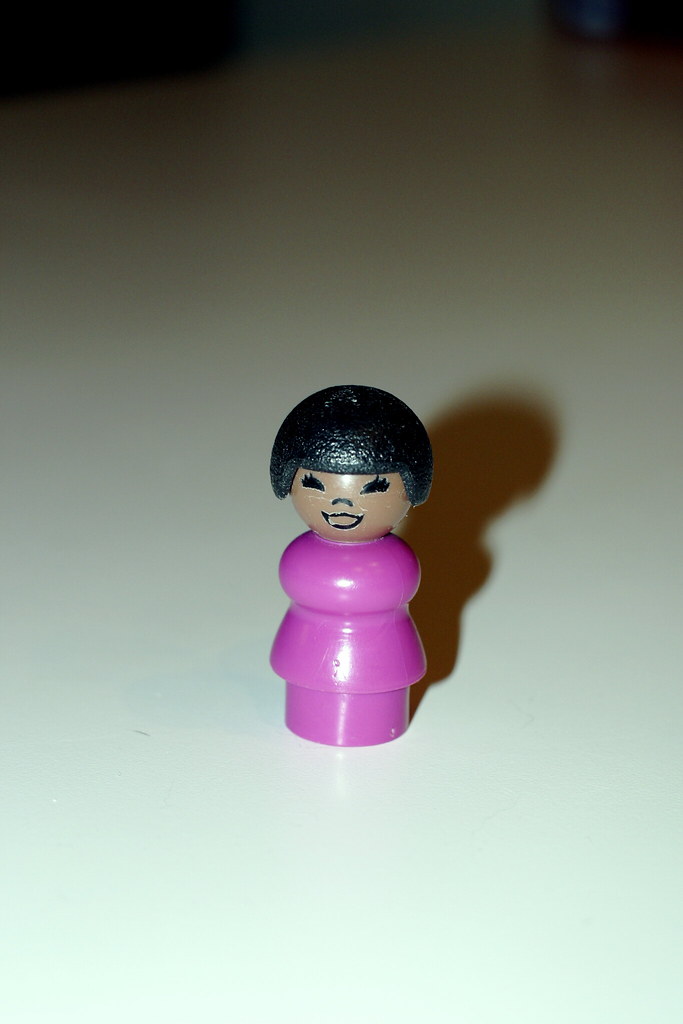
It is also worth noting that CTW/Sesame Workshop has almost never created merchandise that centered on the human cast members. Muppets can be marketed; Muppets can be sold. Human cast members may show up in books and DVDs, but it’s stuffed Big Birds and Tickle Me Elmos that have brought in the big bucks. Which makes sense: I have had a crush on Sonia Manzano for 40 years, but I’ve never wanted a Maria action figure. At the end of the day, the show needs toy and merchandise sales to stay viable, and young children want stuffed monsters. My daughter has a stuffed Elmo that she loves, almost as much as my sister Antoinette loved her stuffed Grover at the same age.
All of these shifts, as I look at them, seem logical. They make sense, even if I’m not crazy about some of them. You’d not be blamed for not recognizing the Sesame Street of your childhood today, but you wouldn’t believe what happened to Bed-Stuy, either. The gentrification of Sesame Street, if you look at it one way, accurately reflects the gentrification of many of America’s inner cities over the past 50 years. But all of this still makes me sad, not just because of nostalgia, but because it means that the new Sesame Street looks a lot less like the neighborhood I am raising my daughter in.
You knew I had to bring this article back to her, right?
I grew up in an almost exclusively white town of under 5,000 in rural Ohio. My neighborhood did not look at all like Sesame Street. But I kind of wished it did. When my wife and I moved to Massachusetts, we gravitated to a small, densely populated, urban neighborhood outside Boston with a large Dominican and Puerto Rican community, where kids still play in the street and nobody calls it “free-range parenting.” And part of me wonders if Sesame Street doesn’t have something to do with that.
Because far more than any other media I can recall from my youth in the early 1980s, Sesame Street presented an aspirational vision of a utopian urbanism and did so when most cultural representations of urbanity were viscerally dystopian. Sesame Street took place in New York City, but the New York City it represented wasn’t at all the same “Fear City” that much media presented us with in flyover country. There was a superabundance of hope on Sesame Street. And cooperation, and love. And counting.
And I want my daughter to be able to watch episodes of Sesame Street where she can see a neighborhood that looks like the one she is growing up in: where the actors look like our neighbors, and the street looks a bit like our street.
And thanks to YouTube video archivists, she can. The fashions are a bit dated, a few of the technological references are pretty outmoded, but at the end of the day, Sesame Street has aged very well. The lessons, from letters and numbers to accepting and loving your neighbors, sharing, being patient — these things are timeless.
She loves Elmo, sure, and we both enjoy the new “Cookie Monster’s Foodie Truck” segments. But that in no way detracts from her enjoyment of the old episodes. She doesn’t care about the lower video fidelity or that some of the old episodes are incomplete. She gets to live in a world with multiple Sesame Streets. And I guess that’s the next best thing.
But I have to ask myself — could Sesame Workshop maybe do better? The recently announced donation of digitized copies of the program’s back catalog to the American Archive of Public Broadcasting is an excellent first step and will let researchers view this incredible library at two locations, WGBH in Boston and the Library of Congress. But what if it made the 50 years of quality educational programming more widely available? Access has to be an important part of the archival mission, along with collection and preservation. Sesame Workshop has been the beneficiary of so much public and charitable funding. What if it, AAPB and HBO, along with other corporate partners, made most of the shows freely accessible to all?
Some years definitely couldn’t be included. PBS and HBO both want rights to the recent years, and it seems that contracts with Amazon and Hulu would likely preclude anything after the year 2000. But that still leaves 30 years of Sesame Street, and I would argue that’s the really good stuff. What if Sesame Workshop worked with HBO to create a free video platform — not unlike HBO Go or HBO Now — that let you watch the first 30 years of Sesame Street, from 1969 to 1999? Throw the old Rita Moreno/Morgan Freeman Electric Company on there, too — another incredibly helpful, testing-based educational program from CTW. And what if they further were able to secure full or even partial rights on some of their many international co-productions? Suddenly you would have a multilingual one-stop Sesame shop.
Sesame Workshop tried to capitalize on these early episodes during the run of Sesame Street Unpaved on the Noggin network, but their partnership with Noggin was dissolved. Similarly, they have packaged DVDs of old episodes, but we seem to have entered an age of streaming for the foreseeable future. With no obvious plans to capitalize on the back catalog, why not make it freely available for all to stream? It might help transform the bad optics of partnering with HBO — no matter how commercially necessary that was — and the bandwidth it would require could easily be underwritten by corporate, tax-deductible giving.
The most common way of accessing online content in poorer and minority communities tends to be on smartphones and tablets. By prioritizing Android over iPhones, you could reach more of those communities. Make episodes downloadable on the app — in doing that, you will ensure that it works for people who may be reliant on spotty access. In these ways, you would ensure that the project isn’t just a grab at nostalgia, but an attempt to reach children in the inner city once again, as per the Ford Foundation’s original mandate — kids who might still live in ungentrified neighborhoods and are hungry for gritty urban utopianism.
I know I still am. And so is my daughter.
Tad Suiter is a stay-at-home dad and part-time professor of communications at CUNY. His current research deals with the history of children’s television. His favorite Sesame Street Muppets are Cookie Monster and Oscar the Grouch. This essay first appeared on his blog in a different form, which was adapted from a June 8 presentation at the New England American Studies Association at Fitchburg State University in Fitchburg, Mass.
This essay appears as part of Rewind: The Roots of Public Media, Current’s series of commentaries about the history of public media. The series is created in partnership with the RPTF, an initiative of the Library of Congress. Josh Shepperd, assistant professor of media studies at Catholic University in Washington, D.C., and national research director of the RPTF, is Faculty Curator of the Rewind series. Email: shepperd@cua.edu


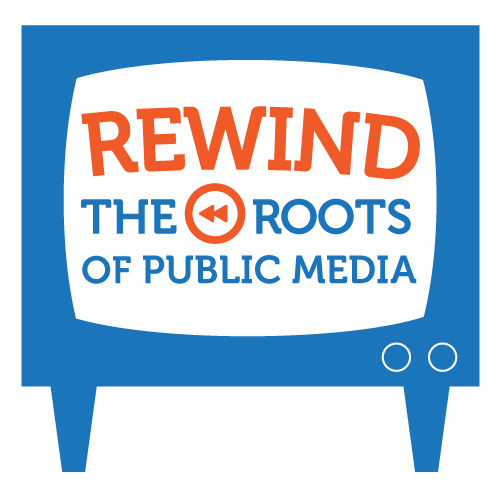




Looks like the 50 year library will all become available!
https://www.google.com/amp/s/deadline.com/2019/10/sesame-street-hbo-max-deal-move-from-hbo-5-year-sesame-workshop-full-library-new-series-specials-spinoffs-1202750909/amp/
Great article! It answered some questions I’ve had for 30 years! I watched Sesame Street from its beginning, when I was three, until I started school. I was confused and fascinated by the accents, the individual shops, the idea of home delivered mail by a person whose name you knew. Sesame Street was miles away different from the small, slow-paced, Southern town of my childhood, where all shopping was done in a supermarket, mail was gathered at the PO, and accents were, well, Southern. By the time my daughter came along and began watching it (and its competition on Nick Jr), I was sad that it was less gritty, less New York, less different from the bright child-safe programming of other networks.
Thanks Tad Suiter for writing this. Nicely written and so fascinating. Will keep the old episodes in mind if I have a kiddo.
Loved your article! Thank you for doing all this research. Our house loves Sesame Street and when they moved to HBO, I was and still really upset as it makes it inaccessible to many.
As of this last week, episodes have been removed from Hulu and HBO GO. We’d have to pay for HBO Max to gain access. Subscribing to all of these streaming options add up.
Where can I find the episodes on YouTube? I just did a search and am not finding it.
thanks for writing this! I’m a millenial and all of my friends feel the same way about Sesame Street. We watch the old episodes on Amazon with our toddlers because none of us can stand how much the show has changed and become less creative. Everyone says the same thing, the new show is annoying and not as educational (if you compare to older episodes and the way things are taught ie concept attainment, this not that etc)
My 20 month old granddaughter loves Sesame Street. That being said, we made the mistake of not playing the older episodes, mainly because we watched on HBO and they only show the newer episodes. Her attention span for the older episodes, before seasons 48, is zero! We keep trying though.
I started watching the show around 1970 or 71, and I miss the old set too. I’m from suburban Ohio, so the set was very different from where I lived, but I liked how so much life happened on the street or in small shops. (Yes, that’s the adult interpretation of what I remember feeling.) And the old set even had some graffiti on it, much like the place where I eventually lived in Brooklyn. Today’s set looks too gentrified to me too.
Very well written article, thank you for posting. Had been having the same thoughts watching Sesame Street recently and just “feeling” like this was not the same program I remember.
Thanks for this. It was a really interesting read.
I thought you might be interested in something I worked on a while ago which is, I guess, the polar opposite of your piece in that it’s a fictional history of the original Big Bird (and their British counterpart).
Thanks again for an interesting article.
Here’s the satirical piece: https://thespacebetweenwork.com/rainbow-street